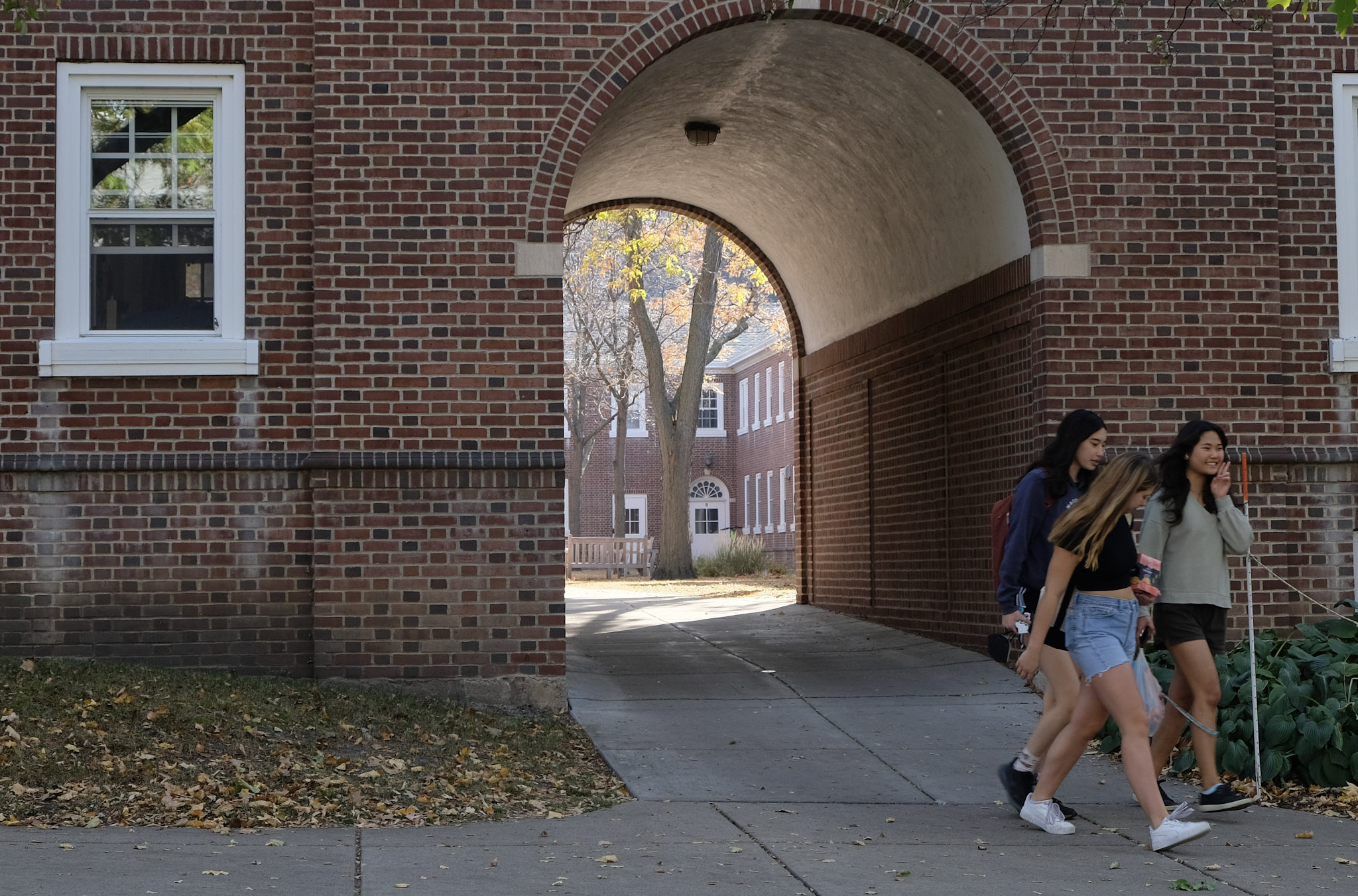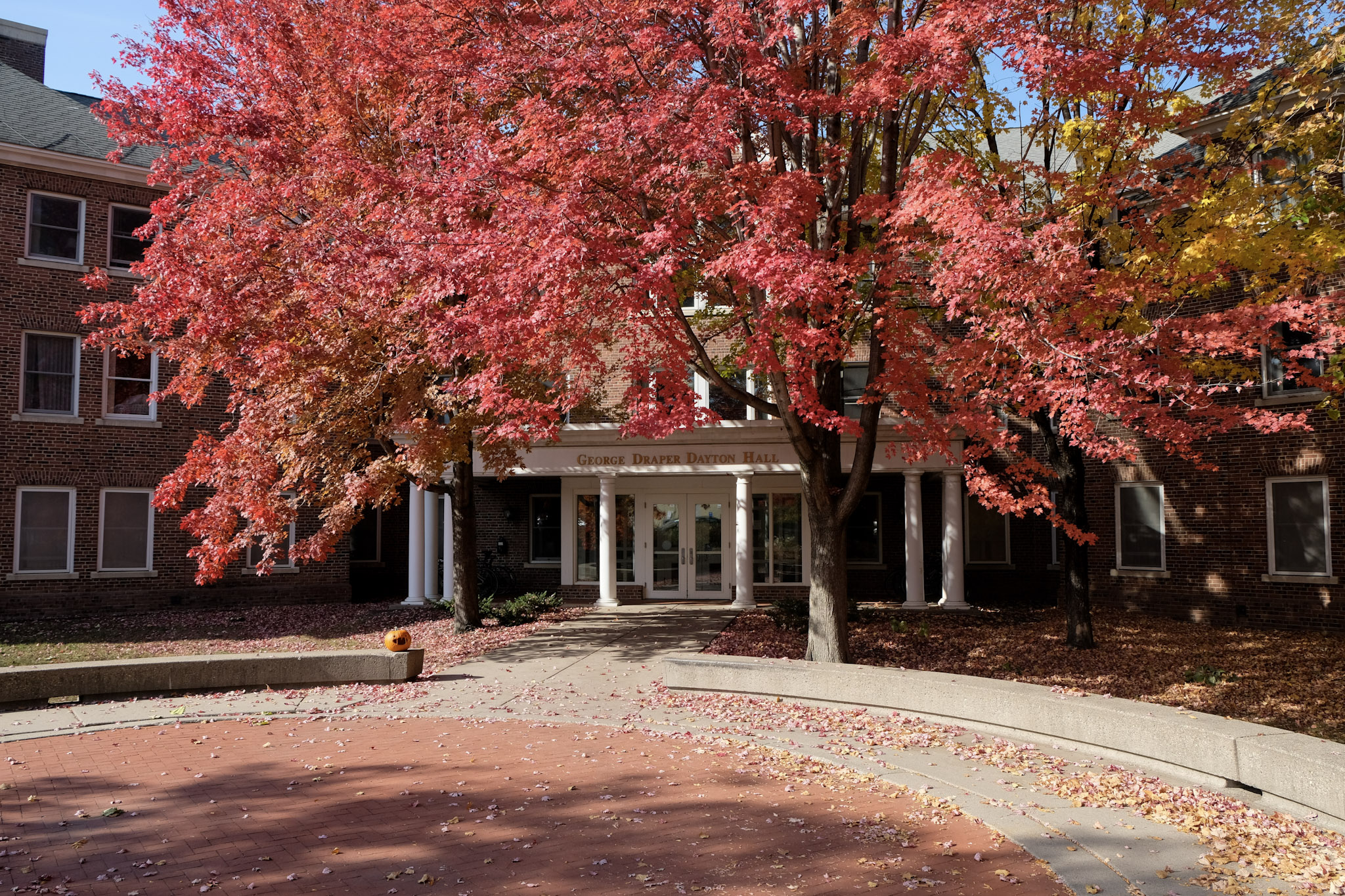Why Does GDD Use 350% More Electricity per Resident Than Kirk?
by Jerome Paulos • April 7, 2023
Summit analysis of data from Macalester College Facilities
Robots, sensors, and high-tech appliances. The last decade has seen the rise of smart homes equipped with devices—thermostats, appliances, lightbulbs—that can be remotely monitored and controlled. But consumers aren’t the only ones benefiting from this technological advancement.
Since 2013, Macalester has installed 59 sensors on electricity, gas, water, and steam meters across campus. By carefully monitoring usage, the school hoped to discover areas it could save resources.
Macalester’s efforts seem to have paid off: according to a publication from the Lawrence Berkeley National Laboratory, the school’s initiative reduced energy usage by 5%. However, this wasn’t all due to the sensors—the school still needed a way to easily access and understand the data.
Tomas Panek ’21, a recent graduate of the economics department, said he landed the perfect work study job his freshman year. To help understand the data, he was tasked with coding an energy management information system (EMIS). An EMIS is a central website that stores and analyzes data from every building on campus.
“I had this interest [in coding] a long time before I was hired,” said Panek, who continued to work on it throughout all four years, adding feature after feature. “You know how things go with coding, you can get excited about it very easily.”
Panek’s system, which monitors data from all 59 sensors in real-time, has been invaluable to facilities staff.
Tyler Terhurue, Macalester’s Energy Manager, keeps the EMIS open on a monitor at all times. He assumed the role at the beginning of this year after the retirement of Mike Pumroy who initially spearheaded the project.
“We use [the EMIS] for determining what buildings are our big users on campus, and which buildings we should target for energy efficiency projects,” said Terhurue. “[Places] where we can get the best bang for our buck.”
Looking at the publicly-available data, one can’t help but notice the discrepancy between some of the student dormitories. Kirk Hall, on the east edge of campus, consistently uses the least amount of electricity per resident of any dorm.
According to Terhurue, “Kirk is probably [Macalester’s] most ‘basic’ dorm building.” No elevator, no building-wide air conditioning, and manual switches for all hall lights.
“[R]ather than automatic/motion sensor lights like I’ve seen in other buildings, [hall lights in Kirk] are usually kept off,” said MaKaila Knight-Allder, the Assistant Director of Residential Life. “Kirk [also] gets a lot of natural light, which makes it nicer to keep the lights off during the day, especially in warmer months.”


Kirk and George Draper Dayton Halls
Jerome Paulos
Most of Kirk’s usage comes from “plug load,” that is, students’ personal devices, appliances, and room lights, as opposed to building energy such as HVAC systems and hall lighting.
Johnny Yang, the Resident Hall Advisor for Kirk, among other dorms, theorized that “since [Kirk] is very close to many buildings on campus…most residents would prefer to spend most of their day at these various locations to study or socialize. Kirk’s design consists of nine isolated sections, making socializing difficult.
“Kirk also has a good percentage of student athletes,” continued Yang, “so they’re usually out and about at practices” instead of using electricity in their rooms during peak times.
But Kirk’s low energy usage isn’t shared by every dorm. George Draper Dayton (GDD) Hall has been recorded to use up to 3.5 times more electricity than Kirk Hall.
The reason? Opened in 1997, it’s among the newer dorms on campus and one of the few with air conditioning. “It’s a dream to live there,” said Panek, who lived in GDD Hall his sophomore year.
Wesley Hearne ’25 shares a GDD suite with three roommates and three mini fridges. He believes the surplus of appliances is encouraged by the unique layout of the suite. Unlike other dorms, GDD suites are divided into groups of two or more bedrooms around a common room and shared bathroom, leaving more space for high-usage appliances.
When told that GDD has the highest electrical use of all dorms, Hearne said “I [am] not surprised, especially considering we’re like the only dorm with A/C.”
(30 Mac is also air-conditioned, and other dorms are partially air-conditioned.) Every suite also has a shower, which he believes leads people to take longer showers and use more water than other dorms.
While Macalester aims to achieve a fully carbon-neutral campus by 2025, only about 30% of electricity in Minnesota comes from renewable sources like wind turbines, solar panels, and hydropower. And Macalester’s newest dorm is the most inefficient.
Curiosities of Macalester
An occasional email with new stories and discoveries